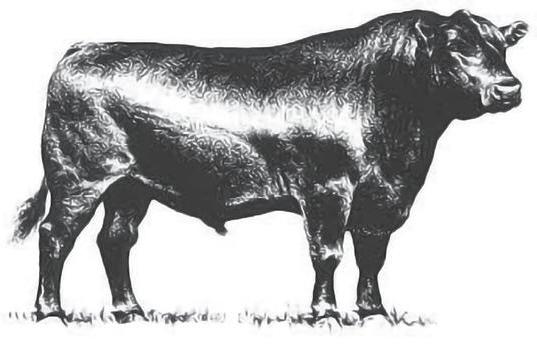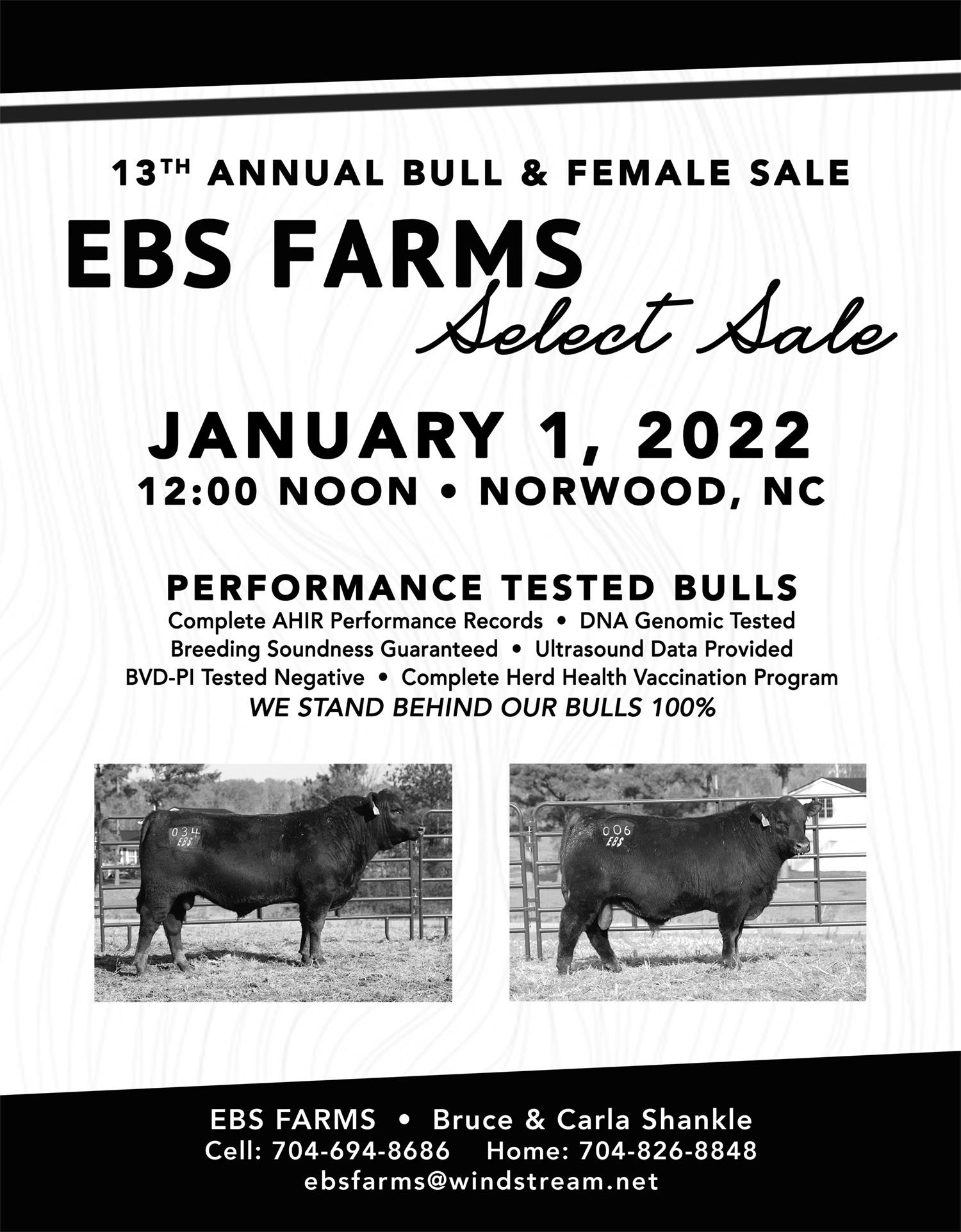
8 minute read
American Angus Association News
ANGUS NEWS
Angus Genetics Inc. Announces Updates. Genetic Evaluation Maintenance - Core 21 – On May 28, the Association, with the guidance of Angus Genetics Inc (AGI), performed required maintenance on the genetic evaluation with updates to the genetic evaluation’s core. Core is a subset of animals representing the entire genotyped population, allowing for Angus’s genetic evaluation to utilize a large number of genotyped animals.
Core was implemented at the advent of Single Step in July 2017 but has not been updated since. With over 20 million registered, pedigreed animals and almost one million genotyped animals recorded, the Association and AGI are taking the necessary steps to update the core, ensuring an accurate representation of the genotyped population.
Core 21, the updated core, is the part of the genomic relationship matrix (GRM) that is directly inverted and then is combined with all other parts to calculate the inverse of the GRM for all animals. Core 21 is a representative sample of the genotyped population that best captures the total variation of the GRM, or the relationships determined among animals using genomic results, which optimizes the evaluation.
Overall, breeders will find correlations and rankings between animals before and after the implementation of Core 21 are very high. In fact, all traits across the entire population saw correlations above 0.99. However, even with a 0.99 correlation, it is no surprise that some animals will show a resulting change in EPD after implementation of Core 21. These changes are due to the better representation of the variation of genomic relationships inside Angus’s weekly genetic evaluation.
Genotyped animals with EPD accuracies <0.50 will experience the most change. For example, for weaning weight EPD, the largest decrease for WW EPD is -12 and our largest increase in WW EPD is +15. These changes are normally distributed. Therefore, even though some large outliers are changing by a significant degree, most of the changes are centered around zero. Though seldom, some high accuracy animals will experience large changes. These changes are generally related to high use sires that were born after 2016 that have many genotyped progenies added to the evaluation since that time. To learn more about the core maintenance update, read Andre Garcia’s latest By The Numbers column in Angus Journal at www.angusjournal.com/ ArticlePDF/0521-by-the-numbers.pdf.
Annual Economic Assumption Update - Each year, the costs and revenue prices underlying the bio-economic model, which drive the Association’s $Values, are updated. This annual update is assembled using data provided by CattleFax. The economic assumptions implemented each year are the average of the previous seven years of data – the 2021 economic assumptions are based on prices recorded from 2014 to 2020. This year’s biggest changes are in terms of Ration Cost and Days on Feed. In May 2020, economic assumptions based on the average of 2013 to 2019 were implemented with an average ration cost of $194. The exchange of 2013 and 2020 costs where 2013 was a year of high feed costs at $323/ton, 2020 replaces it at $163/ton, reducing the average to $171/ ton. With that, average days on feed for both calf fed and yearling fed cattle

Have you forgotten something? Make sure your cattlemen friends are members of your state association!
increases from 236 and 165 days to 240 and 168 days, respectively. Because these two factors offset one another in terms of economics, little re-ranking in both Feedlot Value ($F) and Beef Value ($B) will occur due to these changes.
Overall, the above updates did not result in a significant change to individual $Values. Updates to economic assumptions resulted in correlations above 0.99. Even with these very high correlations, some individual animals can change, with the largest decrease in $C being -24 and the largest increase in $C coming in at +26. Overall, breeders can expect sires to rank very similarly when the 2021 assumptions are implemented. For more information on $Values, visit www.angus.org/nce/valueindexes.
Annual Update Genomic Scores - While GE-EPDs are updated on a weekly basis, genomic scores are only updated once a year. This annual update took place on May 28. The update includes a larger reference population, which genomic scores are ranked against. With that, genomic scores are a by-product of the genetic evaluation, so as EPDs are updated, genomic scores will be updated as well. It is always preferable to use the GE-EPDs when making selection decisions, and the updates to these genomic scores will not affect the GEEPDs themselves. To learn more about GE-EPDs, visit www.angus.org/AGI/ GenomicEnhancedEPDs.pdf.
American Angus Association Welcomes 2021 Interns. Real world experience combined with industry connections for six students. The American Angus Association is dedicated to providing opportunities for youth to grow and succeed through hands on experiences. During the internship program, the Association allows students to strengthen their knowledge about the cattle industry while further advancing their skills and professional network. This summer, interns will join various departments and entities of the Association, including Angus Media and Angus Genetics Inc. (AGI). These students bring various backgrounds and experiences to the Association. • Bree Taylor, an agribusiness major and agricultural real estate appraisal minor from Oklahoma State University, joins the team as one of two events and education interns. Originally from Kingfisher, Okla., Taylor grew up on a small cattle operation and was involved in FFA and 4-H. In the future, she intends to work within the livestock industry serving youth. Taylor said she hopes she can influence youth as much as her peers have influenced her.
“I am looking forward to spending the summer traveling all over the country meeting junior members and working with industry professionals in the purebred cattle industry,” said Taylor. “I love getting to work events and programs that directly impact our youth in the livestock sector of agriculture.” • Jim Stickley, from St. Paris, Ohio, will also serve as an events and education intern. Stickley is a graduate of Lincoln Land Community College and is a current agricultural business and applied economics major with a minor in political science at The Ohio State University. As a current livestock judging team member, Stickley said he has created new connections across the nation while deepening his understanding of agriculture. In the future, he said his goal is to bridge the gap between agriculture and politics through a potential public office or lobbying efforts.
“The American Angus Association is the premier membership organization,” said Stickley. “This opportunity working alongside industry leaders while serving the industry’s youth will produce a network of remarkable connections as I commence my professional career. More importantly, it will allow me to play a small role in the experience our juniors are participating in. My hope is to grant them an unforgettable junior national experience with memories to last a lifetime.” • Amanda Botelho Alvarenga will be joining AGI this summer researching genetic and genomic modeling for foot scores in American and Australian Angus. Coming from a small dairy farm in Minas Gerais, Brazil, Alvarenga began her college career with an interest in animal sciences, which led to her passion for the genetic research field. She is currently working on her Ph.D. in quantitative genetics and genomics at Purdue University. Alvarenga said she hopes she can share her education and experiences with others in the future.
“I am looking forward to working with the enormous dataset with the American Angus Association and the data in collaboration with Australia,” said Alvarenga. “I am excited to learn more about beef cattle operations in the U.S. as well as genetic evaluation at the industry level.” • Jessica Wesson of Searcy, Ark., will serve Angus Media as the editorial intern for the Angus Beef Bulletin. Wesson is currently working on her master’s degree in agricultural and extension education with an emphasis in agricultural communications at the University of Arkansas. Coming from a commercial cattle operation background, Wesson intends to work for a livestock association or agricultural organization in the future. Wesson said she is eager to see how the magazine production process works.
“I look forward to traveling to events to assist with media coverage,” said Wesson. “That is one of my favorite things to do in communications. I am excited to see new states and meet new people.” • Sarah Harris, originally from Springwood, Va., will also join Angus Media as the Angus Journal intern. Harris is a recent graduate from Oklahoma State University and plans to continue her education at New Mexico State University by working on her master’s in agricultural extension and education with a focus in communications. As a fifth generation Angus breeder, Harris is no stranger to the Association. She showed cattle and was involved in livestock judging. Upon graduation, she plans to pursue a career within the seedstock industry and continue to run Angus cattle herself. Harris said she is excited to serve the industry that has built her into who she is today.
“Helping to tell the stories of breeders and showmen alike is an avenue of the communications realm that I’m passionate about,” Harris said. “I am eager to utilize my skillsets in writing, photography, videography, audiography, and graphic design to advance my experience level even further.” • Riley Reep joins the Association as the communications intern. Reep is from Ropesville, Tex., and currently attends Texas Tech University as an agricultural communications student with minors in animal science and international agribusiness. Although she did not grow up within the cattle industry, Reep was raised around cotton production, showed swine across the country, and was heavily involved with FFA and 4-H. Reep said she is excited to learn more about the cattle industry, specifically the Angus family.
“I feel honored to have the chance to learn from such talented individuals while learning more about this sector of agriculture,” Reep said. “I hope I can use this experience to improve my communication skills to better serve the agricultural industry in the future.”
For more information about the American Angus Association, visit www. angus.org.
Continued on the next page










